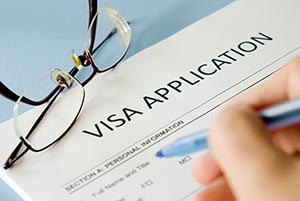While the qualifications for an employment-based immigrant visa are generally more stringent than those required for a temporary, non-immigrant visa, there are categories encompassing a wide range of employment types.
Employment-based visas are broken out into five preference levels, determined by the desirability of recruiting that particular class of workers to the United States.
Employment-Based Visa Preference
In some cases, a person hoping to become a permanent legal resident of the United States through an employment-based immigrant visa has the potential to qualify for more than one type of visa. When the would-be immigrant has a choice, there are multiple considerations, including the likelihood of a particular type of petition being approved. However, one key factor to consider is preference.
Preference is important because having a visa application approved is just the first step. The next is to wait for a visa number to become available and be issued to you. Preference determines how long you are likely to wait before receiving a visa number and the green light to begin working in the United States.
Employment-Based Visa Allocation by Preference
The first, second and third preference employment-based visa categories are each allocated 28.6% of available employment-based immigrant visas. Unused EB-1 visas spill over to the EB-2 category, and remaining unused first and second preference visas spill over to EB-3. The fourth and fifth preference categories each receive 7.1%.
At first glance, it seems as if first, second and third preference visa applicants are treated equally. The critical difference comes into play when the applicant is coming from a country with a high level of employment-based immigrant visa applications. In addition to the annual overall cap and allocation by preference, there is a cap for employment-based immigrants from a particular country. Since EB-1 applicants get first preference for those visas, lower-preference applicants from certain countries may wait a long time to be issued a visa number, even after successfully petitioning.
Types of Employment-Based Immigrant Visas
EB-1 Visas for Priority Workers
The EB-1 first preference visa is granted to foreign workers who fall into one of three categories, all highly competitive:
Extraordinary ability in the sciences, arts, education, business or athletics (EB-1A)
Outstanding professors and researchers (EB-1B)
Multinational managers or executives (EB-1C)
Special qualifications apply to each of the above groups. For example, a professor or researcher seeking an EB-1B visa must be relocating to pursue tenure, accept a tenure-track position or pursue a similar research opportunity at an institution of higher education. Similarly, an EB-1C visa applicant must have worked at least one of the past three years for a foreign affiliate, subsidiary, parent company or branch of the proposed U.S. employer.
The EB-2 second preference visa is issued to two types of workers:
Professionals with advanced degrees
Individuals with exceptional abilities in the arts, sciences or business
An EB-2 visa applicant must have a job offer, and a labor certification is required.
EB-3 Visas
The third preference EB-3 visa is issued to the following types of workers:
Skilled workers, meaning that a minimum of two years of training is required; the work must also not be temporary or seasonal in nature
Professionals with at least a U.S. baccalaureate degree or foreign equivalent
Other workers, meaning unskilled labor requiring less than two years of training or experience; the work must not be temporary or seasonal
USCIS warns that, while the requirements for the EB-3 visa are less stringent, wait times can be long. That is especially true for those applying under the “other workers” category.
EB-4 Special Immigrant Visas
Eligibility for an EB-4 visa is limited to workers of certain specific types, including religious workers, members of the armed forces, broadcasters and Afghan and Iraqi petitioners who translated for or otherwise assisted U.S. troops overseas.
Depending on the circumstances, an employer may be required to petition on your behalf or you may be entitled to file your own visa petition.
Talk to an Immigration Lawyer
If you’re considering seeking a green card through the employment-based visa process, a knowledgeable guide can be your best resource. Get help from an experienced immigration attorney as early as possible to ensure that you are choosing the most advantageous path for you.
Beeraj Patel, Esq.
Latest posts by Beeraj Patel, Esq. (see all)
- Transitioning to Permanent Residency Through Adjustment of Status for Asylum Seekers - April 14, 2025
- What to Do If Your Employer Withdraws Support During the Green Card Process - March 31, 2025
- How a Green Card Attorney Can Help with Complex Immigration Cases Involving Family Separation - March 17, 2025
